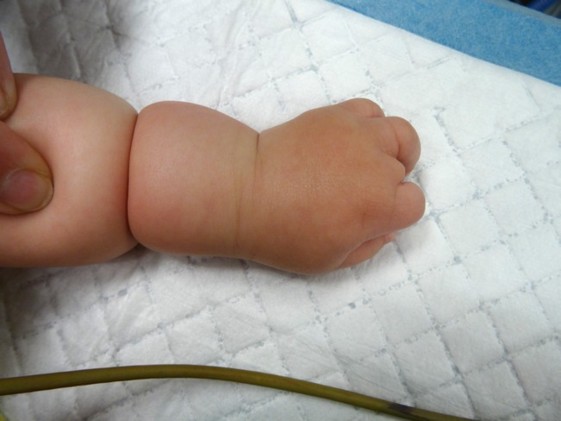( ADAM complex, amniotic band syndrome)
Prevalence: about 1/10,000 births. This term pertains to a heterogeneous group of birth defects caused by an anomaly in the development of a part of the fetus (usually a limb) in utero. The term 'amniotic band sequence' emphasizes the diversity of the possible causes. Two theories are proposed to explain the pathogenesis.
In fact, each of them explains some of the cases:
- amniotic or extrinsic origin: as a result of a partial rupture of the amniotic sac membrane, a limb can be externalized and progressively "strangled" by the fibrous scar in the membrane; in addition, fibrous bands can form inside the sac and interfere with the growth and or the vascularisation of a part of the fetus (amputation of fingers or a limb, for example).
- intrinsic or vascular origin: a vascular malformation or occlusion causes localized ischemia and the end of development of an organ: this explains gastroschisis cases where an amniotic band is associated with a cleft palate, club foot, septo-optic dysplasia.

Anesthetic implications:
depending on the localisation and the importance of the defect
References :
- Pantoja AV, Gonçalves Estevez ME, Pessoa BL, de Paiva Araujo F et al.
The anaesthesiologist and palliative care in a newborn with the ADAM sequence.
Case Reports in Anesthesiology 2017, 6230923
Updated: March 2017